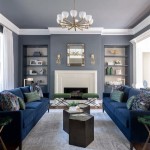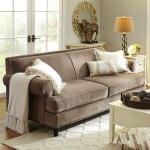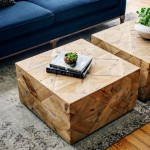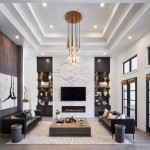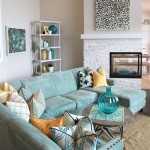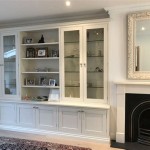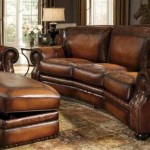Wooden Decoration For Living Room: A Timeless Aesthetic
Wooden decoration for the living room offers a versatile and enduring aesthetic appeal. From subtle accents to statement pieces, incorporating wood into the living room design creates warmth, texture, and a connection to the natural world. The adaptability of wood allows it to complement a wide array of interior design styles, from rustic and traditional to modern and minimalist. This article explores the various applications of wooden decoration in the living room, focusing on its aesthetic benefits, practical considerations, and different design possibilities.
The Aesthetic Benefits of Wooden Decoration
Wood possesses inherent qualities that contribute significantly to the overall ambiance of a living room. Its natural grain patterns, varying tones, and unique textures introduce visual interest and depth to the space. Unlike synthetic materials, wood evokes a sense of authenticity and organic beauty. This natural charm can soften the potentially stark lines of modern furniture and create a more inviting and comfortable environment.
The color palette of wood ranges from light, airy tones like birch and maple to rich, dark hues such as walnut and mahogany. These variations allow homeowners to select wood tones that align with their desired aesthetic and complement existing color schemes. Light-colored wood can brighten a room and create a sense of spaciousness, while darker wood tones add warmth and a feeling of sophistication. The ability to stain or paint wood further expands the design possibilities, allowing for customization and personalization.
Beyond its visual appeal, wood also contributes to the tactile experience of a living room. The smooth, cool surface of polished wood contrasts beautifully with the soft textures of upholstery and carpets. Natural imperfections in the wood grain, such as knots and variations in color, add character and a sense of history to the decor. This tangible connection to nature can promote a sense of well-being and tranquility within the living space.
Furthermore, wooden decoration can be strategically used to create focal points within the living room. A large, handcrafted wooden coffee table can serve as a central gathering place, while a distinctive wooden wall panel can add visual drama to an otherwise plain wall. These carefully chosen elements can draw the eye and create a sense of balance and harmony within the room.
Practical Considerations When Using Wooden Decoration
While the aesthetic benefits of wooden decoration are undeniable, practical considerations are also important when incorporating wood into the living room design. The type of wood selected, its treatment, and its placement within the room can all affect its longevity and maintenance requirements.
Different types of wood possess varying degrees of durability and resistance to moisture and pests. Hardwoods, such as oak, maple, and cherry, are generally more durable and resistant to dents and scratches than softwoods like pine and cedar. The choice of wood should be based on the intended use of the decorative element and the level of wear and tear it is likely to experience. For example, a heavily used coffee table would benefit from being constructed from a durable hardwood, while a decorative wall panel could be made from a lighter, less expensive wood.
The treatment of wood also plays a crucial role in its performance and longevity. Applying a sealant or finish can protect the wood from moisture, scratches, and stains. Different types of finishes, such as varnish, polyurethane, and oil, offer varying degrees of protection and aesthetic effects. A matte finish can preserve the natural appearance of the wood, while a glossy finish can add a touch of elegance and sophistication. Regular cleaning and maintenance, such as dusting and polishing, can help to preserve the beauty and integrity of wooden decoration for years to come.
Consideration should also be given to the placement of wooden decoration within the living room. Direct sunlight can fade the color of wood over time, so it is advisable to position wooden furniture and accessories away from windows or to use curtains or blinds to filter the light. Humidity levels can also affect wood, causing it to expand or contract. Maintaining a stable humidity level in the living room can help to prevent warping and cracking.
The sourcing of wood is another important practical consideration, particularly in light of environmental concerns. Choosing sustainably sourced wood from responsibly managed forests can help to minimize the environmental impact of the decoration. Look for certifications such as the Forest Stewardship Council (FSC) to ensure that the wood comes from a sustainable source. Repurposing or reclaiming wood from old buildings or furniture is another environmentally friendly option that can add character and history to the living room decor.
It's also essential to consider the overall weight and stability of wooden furniture, especially larger pieces like bookshelves or cabinets. Ensure that the furniture is sturdy enough to support its contents and that it is properly anchored to the wall to prevent tipping. This is particularly important in households with children or pets.
Design Possibilities with Wooden Decoration
The versatility of wood allows for a wide range of design possibilities in the living room. From furniture to accessories, wood can be incorporated in various ways to create a cohesive and visually appealing space.
Wooden furniture is a cornerstone of living room design. Coffee tables, side tables, bookshelves, and entertainment centers can all be constructed from wood, providing both functionality and aesthetic appeal. The design of wooden furniture can range from simple and minimalist to ornate and traditional, depending on the desired style. A sleek, modern coffee table made from light-colored wood can complement a contemporary living room, while a rustic, handcrafted bookshelf made from reclaimed wood can add character to a farmhouse-style living room.
Wooden wall decoration can add visual interest and texture to the living room. Wooden wall panels, picture frames, and decorative shelves can be used to create focal points and display artwork and accessories. A large wooden map or a collection of framed botanical prints can add a touch of personality to the space. Wooden wall panels can be used to create a feature wall, adding warmth and depth to the room. Shiplap, a type of wooden paneling, is a popular choice for adding a rustic or coastal feel to the living room.
Wooden accessories can be used to add subtle touches of warmth and texture to the living room. Wooden bowls, trays, and candle holders can be used to decorate coffee tables and shelves. Wooden sculptures and figurines can add a touch of artistry to the space. A wooden frame around a mirror can add a touch of elegance and sophistication. These small details can contribute significantly to the overall ambiance of the living room.
Wooden flooring is another option for incorporating wood into the living room design. Hardwood floors are a classic choice, offering durability, beauty, and a timeless appeal. Engineered wood flooring is a more affordable alternative that offers similar aesthetic benefits. Wooden flooring can add warmth and richness to the living room, creating a comfortable and inviting atmosphere. Area rugs can be used to soften the look of wooden flooring and add a touch of color and texture.
Wooden beams can add architectural interest to the living room, particularly in homes with high ceilings. Exposed wooden beams can create a rustic or farmhouse-style aesthetic, while painted wooden beams can add a touch of elegance and sophistication. Wooden beams can also be used to conceal wiring or ductwork, providing a functional and aesthetically pleasing solution.
Combining different types of wood and finishes can create a dynamic and visually interesting living room. Mixing light-colored wood with dark-colored wood can add contrast and depth to the space. Combining smooth, polished wood with rough, textured wood can add tactile interest. Experimenting with different wood tones and textures can create a unique and personalized living room design.
Ultimately, the key to successful wooden decoration is to create a balance between aesthetics and practicality. By carefully considering the type of wood, its treatment, and its placement within the room, homeowners can create a living room that is both beautiful and functional. The enduring appeal of wood ensures that it will remain a popular choice for living room decoration for years to come.

Naturally Cozy These Are The Most 7 Beautiful Living Room Ideas With Wood

Elegant Wooden Mandala Wood Wall Art Decor Flower Interior Decoration Bedroom Panel Living Room Etsy

Japandi Wood Wall Decor Hanging Carved Home Bamboo Art For Living Room

Embrace Natural 24 Rustic Living Room Decor Ideas Rugs Direct

Eye Catching Wooden Wall Design For Your Living Room

Living Room With Wooden Finish

30 Rustic Living Room Ideas For A Cozy Organic Home Decoist

Boho Style Spring Bookshelf Decor Making Maanita

20 Must Try Living Room Design Ideas For A Cozy Home

Stunning Living Room Furniture Wood Ideas For A Stylish Home Q

